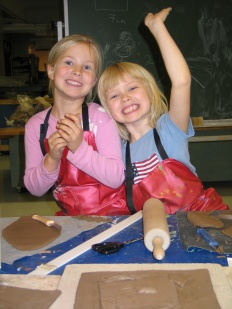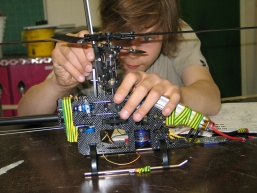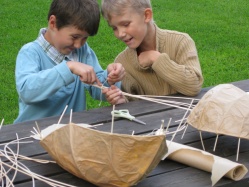Basic Art Education in Crafts

Description
Basic education in the arts is provided primarily for children and young people on an extracurricular basis. It is provided at music institutes and schools, art schools, dance institutes and schools, handicrafts schools and other educational institutions. Basic education in the arts is one of the success stories in the Finnish education system. The number of students has grown steadily since 1990’s and it is now around 126 000. It is regulated by the law (633/1998).
Basic education in arts is organised by municipal institutes, such as adult education centres and specialised art schools, and private art institutes. In addition to educational institutes, some arts and crafts associations may arrange basic arts education. Regional and local cooperation has increased in the organisation of education, as have consolidations of institutes due to municipal amalgamations. The strength of the local associations is in their networked operations (crafts centres), which means that the wide-ranging activities of crafts school result in efficiency, efficacy and equal accessibility. In terms of crafts, basic education in arts is provided in accordance with the basic or advanced syllabus. The scope of the basic syllabus is 500 hours while the advanced syllabus is 1,300 hours. Any possible early-age and adult education is decided upon by each provider in its curriculum. The curriculum also specifies the structure of the education as well as the methods of completing the studies and the time allotted.
The Taito Craft Schools currently have about 3,000 students. The largest craft school has about 1,000 students and the schools of six associations receive a state aid based on hours of education.
The operating concept of the Taito Group is to promote Finnish crafts culture as a skill and trade. Maintaining crafts skills is the organisation’s core social mission. Arts education plays an important role in supporting the people’s well-being and comprehensive growth. The education takes account of special local and regional characteristics and strengths, along with demonstrating modern cultural traits and crafts traditions in its implementation.

Background
Basic education in arts was pioneered by music schools, which sprung up in the 1960s, followed by schools for visual arts and dance in the 1970s. The planning of actual basic education in arts was not started until the mid-1980s. New disciplines are represented by crafts, architecture, audiovisual art, theatre, circus and literary art.
Professor Pirkko Anttila’s speech at the organisation’s Kotiteollisuus kannattaa (Handicrafts Have Value) seminar in Tampere in June 1988 had a significant impact on the establishment of crafts schools. In addition to this, International Young Hands conferences paved the way for the organization’s strengthened role in terms of crafts activities for children and young people. The first crafts school began its operations in the autumn of 1989 in Seinäjoki. From the very start, the Taito Group cooperated actively with the Ministry of Education and Culture and the Finnish National Agency for Education to develop its operations, and representatives of the Taito Crafts Schools for Central Finland and Pirkanmaa were involved in developing the crafts curricula. The organization has emphasised teacher education from the get-go.
The Act on Basic Education in the Arts was issued in 1992, and the national curriculum principles were approved in the same year. Arts education for adults was initiated in the late 1990s. At the turn of the millennium, the Taito Crafts Schools operated by the associations in Pirkanmaa and Central Finland received permission to organise basic education in arts and were included in the state aid scheme based on hours of education provided.
Cooperation between the central organisations for basic education arts began in 2002, and the joint Taiteen perusopetusliitto TPO ry (Finnish association for basic education in arts) was established in 2007.

Future
Crafts skills are an asset that grows and deepens through use, which is why it is important to provide opportunities to develop them from a young age. The crafts schools bear strong cultural significance in terms of maintaining crafts skills and securing the organization’s future. Alongside the crafts schools, the arts education has in many ways enriched the course and workshop activities of the member associations: the diversity of crafts techniques and work methods has increased, and the creative and process-oriented approach has expanded the product-centric view, giving it a more overarching significance focused on well-being. Basic education in arts is aimed primarily at children and young people, but it can also be arranged for adults. The goals and content are the same for adults as for children and young people, with due consideration given to the prior skills, learning and experience of each adult.
Basic education in arts is taught by crafts professionals of the relevant associations. Part-time teachers can be craftspersons, designers and artists working in the field.
Going forward, it is also essential to develop cooperation with other educational institutions providing education in crafts in order to secure life-long and personalized paths of learning.
